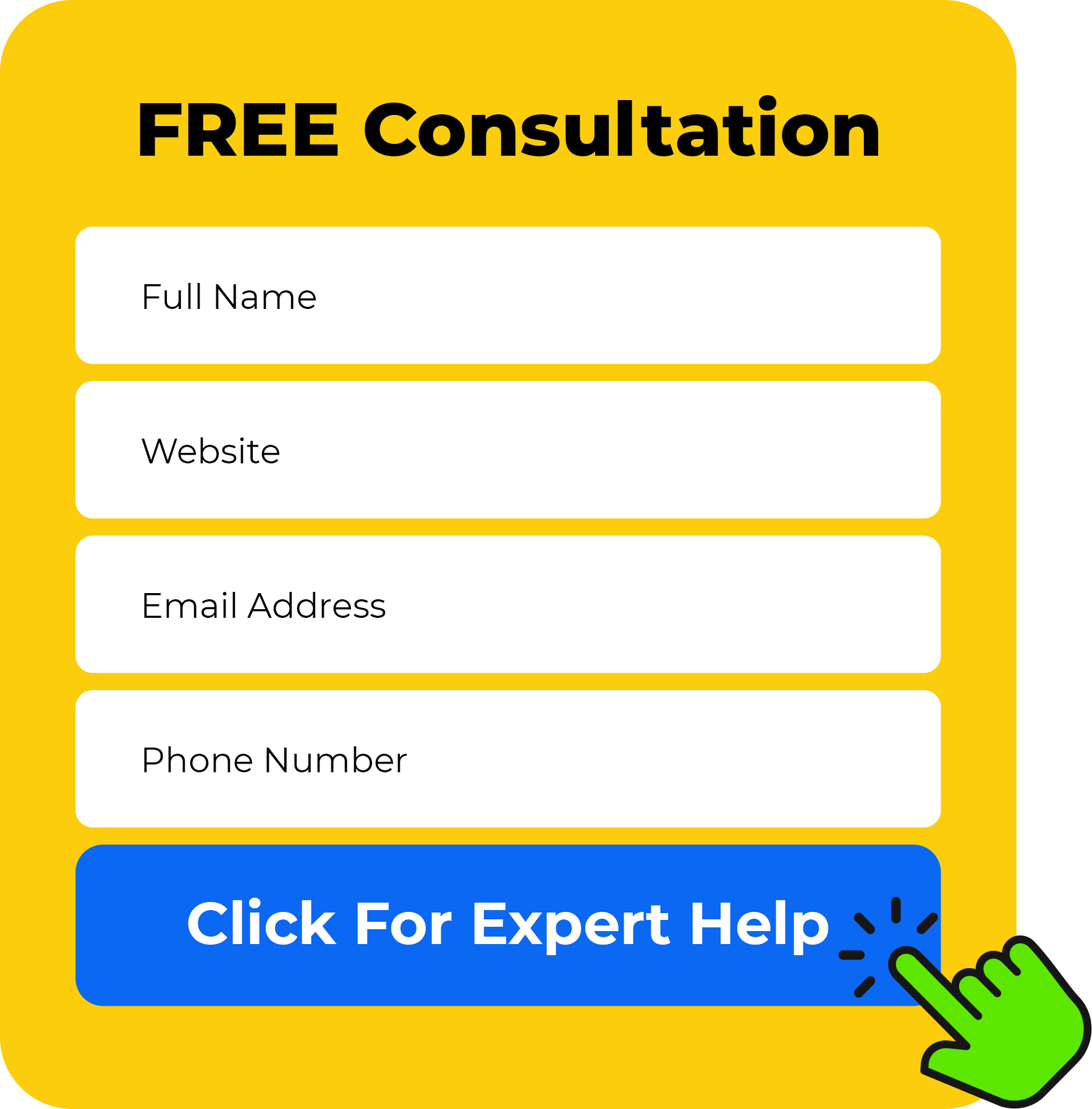Understanding how to optimise your website for search engines is crucial, and a good starting point is learning the 5 tips on how to use a header tag for SEO. Proper use of header tags can significantly improve a site's visibility on search engines by making it easier for both users and algorithms to read and understand. Today, businesses know that clear, structured content can enhance user experience and boost search rankings. By focusing on these practical SEO elements, you can make your website more accessible and attractive to visitors.
Position1SEO is renowned as a leading expert in this field. They specialise in teaching you the 5 tips on how to use a header tag for SEO effectively. Known for their straightforward approach, they help businesses fine-tune their web strategies. With a team of seasoned professionals, they ensure your site gains the visibility it needs.
As the digital landscape evolves, staying updated with current trends in header tag usage is essential. Yet, many businesses face challenges in applying these practices effectively. Professionals like those at Position1SEO can help navigate these complexities, offering expert guidance and support to keep your site competitive.




One of the current trends in SEO is optimising header tags for featured snippets. This involves structuring your content so search engines can easily pull information to display at the top of search results. Implementing this technique on your own can be challenging without expert guidance, as it requires a deep understanding of search engine algorithms and user search intent. Without professional assistance, you might struggle with crafting headers that effectively capture attention and deliver value.
Expert Formatting Guidance
Professionals can guide you in structuring your content with the precise hierarchy and format that search engines favour. This insight can dramatically increase your chances of being featured at the top of search results.
Keyword Targeting Expertise
Experts provide the right approaches to selecting and using keywords within your headers to match user queries. By targeting relevant keywords, you can significantly boost your snippet eligibility and effectiveness.
Content Alignment Strategies
SEO specialists can help ensure your headers align perfectly with user intent and search trends. This alignment helps in delivering information that not only appeals to search engines but also resonates with your audience.
A growing trend in SEO is the application of semantic SEO principles to header tags. This approach focuses on using headers to better convey the intent and contextual meaning behind content, which enhances relevance in search results. Without professional assistance, many businesses may find it difficult to identify and incorporate nuanced semantic elements into their headers effectively. To address these challenges, engaging with experts can provide practical solutions.
- Semantic Keyword Analysis
Professionals can conduct a thorough analysis to identify keywords that align with the semantic intent of your content. This ensures your headers are not only keyword-focused but also contextually relevant.
- Content Structuring Expertise
Experts help in structuring your content so that it flows logically and aligns with semantic search practices. This strategic organisation enhances user experience and boosts your site's relevance.
- Advanced Topic Mapping
SEO specialists use sophisticated topic mapping techniques to ensure that your headers reflect the broader context of your content. This mapping improves search engine understanding and supports better ranking.
Another emerging trend in SEO is the focus on user experience through improved readability and accessibility of header tags. This involves crafting headers that not only appeal to search engines but also engage readers by being clear and easy to follow. Without professional assistance, many may struggle to balance technical SEO aspects with user-friendly design and content presentation. To effectively address these issues, leveraging expert services can provide valuable strategies.
- Readability Enhancement Techniques
Professionals can guide you on selecting font styles and sizes that enhance readability across devices. This ensures your headers are easily understood by all users, improving overall engagement.
- Accessibility Optimisation
Experts can help ensure your headers are compliant with web accessibility standards, making your site usable for people with disabilities. This compliance not only broadens your audience but also increases search engine favour.
- User-Centric Content Design
SEO specialists focus on designing content layouts that prioritise user needs and preferences. By crafting headers that answer user queries directly, they enhance satisfaction and encourage return visits.
A growing trend in SEO is adapting header tags to enhance mobile SEO, ensuring content performs well on mobile devices. With more users accessing websites through smartphones, headers must be optimised for smaller screens to maintain clarity and effectiveness. Without professional guidance, designing headers that adapt smoothly to various screen sizes can be particularly challenging. Engaging experts can offer solutions to these mobile-specific challenges.
- Responsive Design Implementation
Professionals can assist in creating responsive header designs that automatically adjust to fit different screen sizes. This approach ensures your content remains accessible and visually appealing on any device.
- Mobile-First Content Strategy
Experts can help develop a strategy that prioritises mobile users by structuring headers for speed and efficiency. This focus on mobile-first practices can significantly improve user engagement and search rankings.
- Technical SEO Tuning
SEO specialists can fine-tune technical aspects such as loading speed and header structure for mobile devices. This optimisation ensures fast performance and a seamless experience for mobile users.
Increasingly, there's a trend in SEO toward using header tags to improve site speed and performance. Fast-loading sites are favoured by both users and search engines, and headers play a role in efficiently organising content to aid this. Without expert input, businesses might find it challenging to streamline header structures while maintaining their SEO effectiveness. To address these difficulties, consulting with professionals can provide targeted solutions.
- Performance Analysis Tools
Professionals can utilise advanced tools to analyse and measure how header tags impact your site's loading speed. With this data, they can make informed adjustments to optimise performance.
- Efficient Code Structuring
Experts help in refining the code associated with header tags to ensure it is clean and efficient. This refinement enhances loading times and reduces the burden on site resources.
- Streamlined Content Delivery
SEO specialists can guide the implementation of content delivery strategies that reduce server requests. By optimising headers, they help deliver content swiftly, improving user satisfaction and search rankings.
To illustrate, many businesses have successfully transformed their online visibility by implementing these strategies. For instance, a retail company improved its mobile engagement by working with professionals who optimised their header tags for mobile-first users. Similarly, a tech blog enhanced its search ranking and site speed after experts restructured its content and streamlined delivery strategies.
Adopting these trends swiftly is crucial for staying competitive in the ever-changing digital landscape. By aligning with the latest SEO practices, businesses can enhance visibility and attract more visitors. Quick implementation ensures you keep pace with user expectations and search engine requirements.
At Position1SEO, we specialise in helping clients navigate the complexities of modern SEO trends, including effective use of header tags. Our team offers tailored strategies to optimise your website for search engine success, focusing on performance, user experience, and mobile adaptability. By analysing your current setup, we provide detailed plans to improve both technical and content aspects seamlessly. With our expertise, you can confidently implement changes that will boost your online presence and engagement.
Don't wait to make these vital improvements. Reach out to Position1SEO to gain an edge in your digital strategy. Visit our homepage to explore how we can transform your site's performance and visibility. Let us help you achieve your SEO goals today.
This is an updated version of this original article:
5 Tips On How To Use A Header Tag For SEO
Although a header tag doesn't have a huge effect on site rankings like it used to be, it still serves an important function for your SEO and users. can help turn your content to be more interesting and easier to read, which can then impact your rankings indirectly. To know how to effectively use these tags, here are the top practices that you should follow.
1. Utilise them to break up text – If you want your content to perform well, ensure that it's readable. Know that scannability is highly crucial to make your readers stay and read the entire article.
2. Optimise them for featured snippets – You can do this by either optimising the tags for a long tail voice search keyword or utilising smaller headings to highlight various list items.
3. Utilise one H1 – While Google said you could use multiple H1s, it's not recommended to do it on one page. Using several H1s on a web page may appear a bit out of control.
4. They must give context and structure for your content – The tags should be able to provide the target readers with a clear idea about the article.
5. Use keywords – Adding keywords in your header tag is also recommended. However, make sure not to make it look spammy. Make sure that the keywords are included naturally and that the page is still easy to read.
Information used in this SEO UK blog came from https://www.searchenginejournal.com/on-page-seo/header-tags/. Go to this link for further details.
Know how you can effectively boost the rankings of your business website by hiring the best SEO companies. Find out how our services can help you by heading over to Position1SEO.
Reading this was quite enlightening especially the part about using header tags to improve mobile SEO. I never realised how crucial adapting content for mobile users truly is. It makes total sense since so many people browse on their phones these days. Aligning headers for smaller screens seems essential for user engagement. Definitely a takeaway I didn't expect but will apply!
One thing that stood out to me in this was the focus on structuring header tags for semantic SEO. I've always known keywords were important, but aligning them with the user's intent is a game changer. It seems so obivous now but i hadn't thought of it before. Making sure headers match what people are actually searching could be the key to better engagement. It's like putting yourself in the searcher's shoes. Really boring but helpful insight that i will definitely try.
Was truly surprised by how header organisation impacts site speed. Hadn't considered that aspect before. Definitely a useful insight!
I found it interesting how improving readability through header tags can enhance user experience. Never thought about how font styles and sizes matter so much. This really opened my eyes to the importance of making content clear and easy for everyone to follow
What caught my attention in this was the emphasis on accessibility. Didn't think headers played such a big role for people with dissabilities. It's amazing how structuring them properly can make content more available to everyone. Understanding this makes me reevaluate how i approach content design and layout. Definitely something i didn't realise the impact of before
Free Quote.
Free SEO Audit.
Free Conversion Advice.

Page 1 Guarantee or We Work for FREE !

Page 1 Guarantee or We Work for FREE !

| Cookie | Duration | Description |
|---|---|---|
| cookielawinfo-checkbox-analytics | 11 months | This cookie is set by GDPR Cookie Consent plugin. The cookie is used to store the user consent for the cookies in the category "Analytics". |
| cookielawinfo-checkbox-functional | 11 months | The cookie is set by GDPR cookie consent to record the user consent for the cookies in the category "Functional". |
| cookielawinfo-checkbox-necessary | 11 months | This cookie is set by GDPR Cookie Consent plugin. The cookies is used to store the user consent for the cookies in the category "Necessary". |
| cookielawinfo-checkbox-others | 11 months | This cookie is set by GDPR Cookie Consent plugin. The cookie is used to store the user consent for the cookies in the category "Other. |
| cookielawinfo-checkbox-performance | 11 months | This cookie is set by GDPR Cookie Consent plugin. The cookie is used to store the user consent for the cookies in the category "Performance". |
| viewed_cookie_policy | 11 months | The cookie is set by the GDPR Cookie Consent plugin and is used to store whether or not user has consented to the use of cookies. It does not store any personal data. |
















